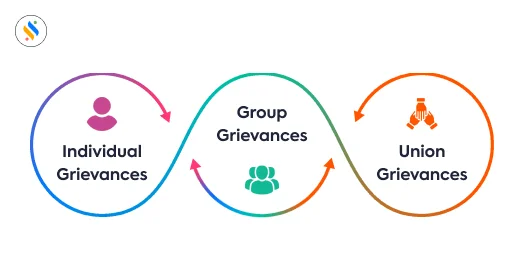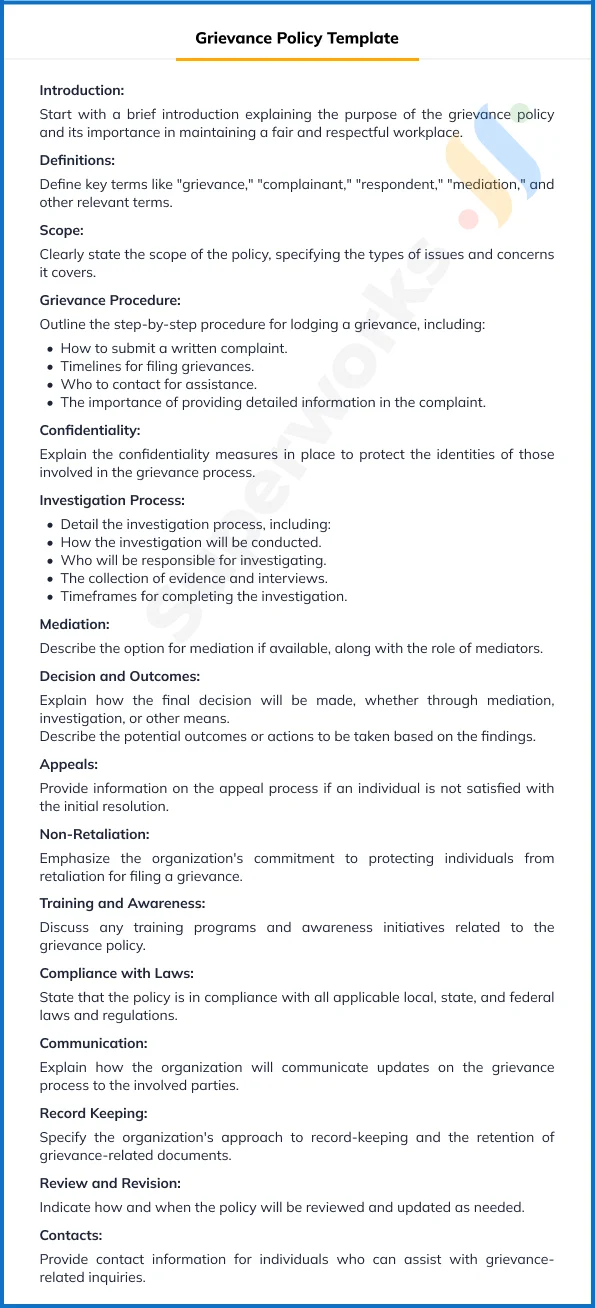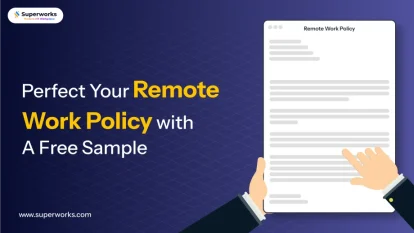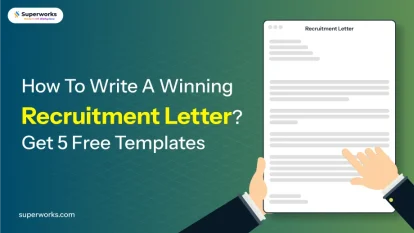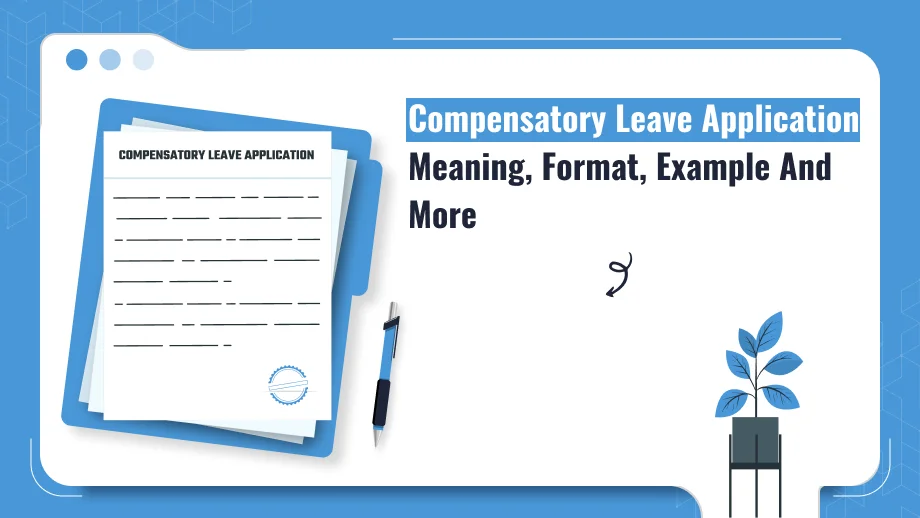Grab a chance to avail 6 Months of Performance Module for FREE
Book a free demo session & learn more about it!
-
Will customized solution for your needs
-
Empowering users with user-friendly features
-
Driving success across diverse industries, everywhere.
Grab a chance to avail 6 Months of Performance Module for FREE
Book a free demo session & learn more about it!
Superworks
Modern HR Workplace
Your Partner in the entire Employee Life Cycle
From recruitment to retirement manage every stage of employee lifecycle with ease.


Seamless onboarding & offboarding
Automated compliance & payroll
Track performance & engagement
Simplifying Employee Grievance Policy: What You Need to Know
- Superworks
- 5 min read
- November 8, 2023
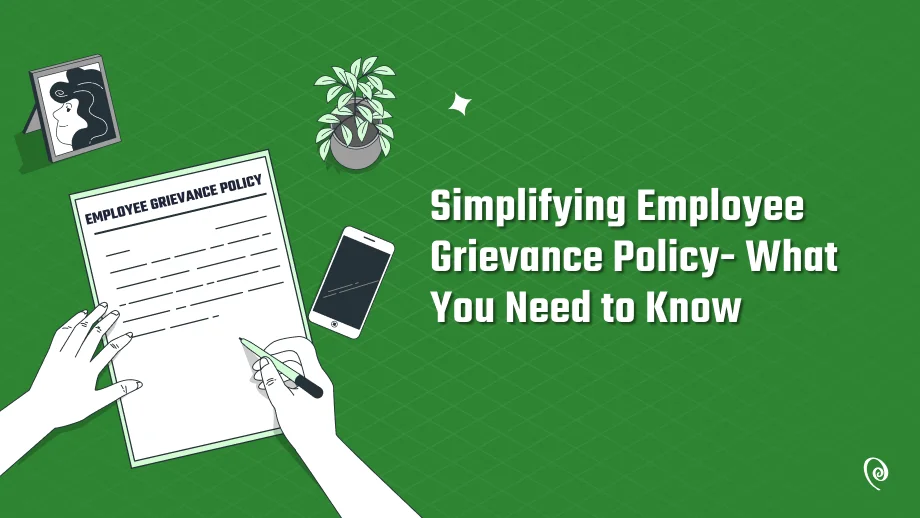
When things go awry at the workplace, employees have a way to address unfair or unusual situations – they can file a formal complaint known as a grievance. In simpler terms, a grievance is when an employee raises a concern about something that doesn’t seem right at their workplace.
To manage these complaints, companies have established procedures called grievance policies. In this article, we will delve into what a policy grievance entails and how it benefits both employees and employers.
Note: You can download directly from here and edit as per your need.
Advantages of Grievance Procedures:
1. Formal Procedures:
Grievance procedures come with predefined steps, providing employees with a clear outline of what to expect once they file a complaint
2. Transparency:
These procedures are well-documented, ensuring transparency in how the company addresses grievances.
3. Written Documentation:
Written complaints leave a paper trail, making it challenging for companies to ignore or deny the issues raised by employees.
4. Legal Support:
In some cases, unions permit employees to have a professional union representative or attorney assist them free of charge. This can encourage employees to voice their concerns without the fear of incurring legal costs.
Disadvantages of Grievance Procedures:
1. Complexity:
Grievance procedures can be complex, which might discourage employees from using them. Employers may also hesitate to act on complaints unless they are formally documented.
2. Lengthy Process:
The grievance handling procedure can be lengthy, potentially prolonging the resolution of the complaint. This extended duration is necessary to ensure that all essential details are thoroughly examined.
3. Excessive Paperwork:
These procedures can lead to a significant amount of paperwork, potentially slowing down the business operations. This can be used strategically to cause disruption by requiring investigations for every complaint.

Ready to create a fair and transparent workplace? – Get free resources!
Explore the benefits of grievance procedures and improve employee satisfaction and trust.
Don’t wait, take the first step toward a better workplace! Get the free employee grievance policy for free from HR toolkit.
3 primary types of grievances that apply to organizations across India:
1. Individual Grievances:
These are complaints filed by individual employees against their employer or management.
Examples of individual grievances include claims of biased demotions, workplace harassment, or not receiving fair and consistent pay.
2. Group Grievances:
Group grievances arise when a team or a collective of employees jointly raise concerns or complaints against management.
An instance of a group grievance might involve none of the team members receiving a promised bonus from the employer.
3. Union Grievances:
While less common in corporate settings, union grievances occur when an entire union raises issues against management, often related to contract misinterpretation.
Every company has its unique procedures for handling these grievances. But what exactly is a grievance procedure?
A grievance procedure is a formal method that allows employees to raise complaints against their employer. It serves as a structured process through which employees can express their concerns when informal or verbal communication proves ineffective. Such procedures are particularly crucial when dealing with grave issues such as sexual harassment or bullying.
Now, let’s explore the advantages and disadvantages of grievance procedures:
How to Write a Formal Grievance Policy?
1. Formal Investigation:
The depth and complexity of the investigation depend on the nature of the complaint. Simple issues can often be resolved quickly, while more serious matters may necessitate extensive investigations, possibly involving third-party experts.
2. Formal Written Complaint:
The process typically begins with the employee submitting a formal written complaint. This document serves as a guiding reference throughout the grievance resolution process.
3. Conclusion by Investigator:
The investigator reviews the evidence and reaches a conclusion. While some cases may have a clear verdict, others may have more ambiguous outcomes.
4. Mediation:
Mediation may come into play when contracts specify it as part of the procedure. A mediator collaborates with the employer and the employees to find a resolution. In some cases, there may not be a predefined solution until the mediation meeting takes place.
5. Consequences:
Based on the investigator’s findings, both the employer and employee take appropriate actions. This can range from formal agreements during mediation to potential employment termination.
What happens if the employee is unsatisfied with the outcome? They retain the right to pursue legal action if their employment contract permits it.
The duration of a grievance procedure varies depending on the nature and complexity of the grievance. Resolving complex complaints may take months, while simpler ones can be addressed within a matter of hours by just addressing them with an employee grievance letter template.
Grievance Policy Template
Conclusion
In conclusion, every company has its own approach to handling grievances, even if they don’t have a specific policy in place. If your organization lacks a grievance policy, Superworks HRMS software can offer assistance. The free HR Toolkit provides a comprehensive set of HR-related documents, including policies, letters, and emails.
Access these HR resources for free at Superworks to help your organization navigate the intricacies of grievance management effectively.
